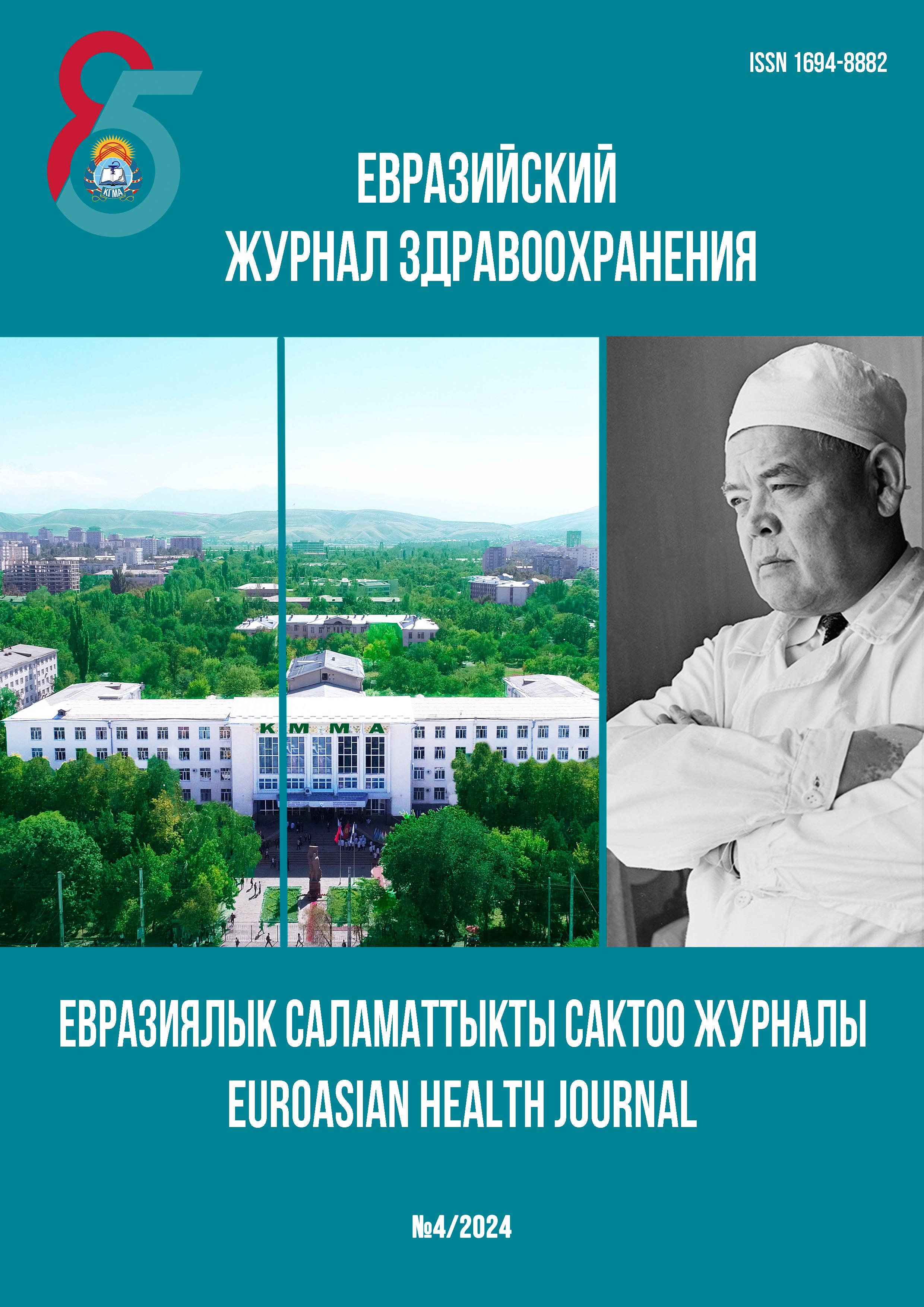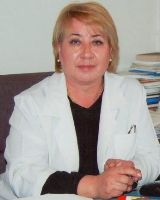ANALYSIS OF THORACOLUMBAR SPINE FRACTURES: DIAGNOSIS, ETIOLOGY AND TREATMENT METHODS
DOI:
https://doi.org/10.54890/1694-8882-2024-4-157Abstract
Spinal fractures are considered a significant cause of disability and a socioeconomic problem. The incidence of spinal injuries tends to increase with age, due to decreased bone density and increased high-energy injuries. In this study, we assessed the frequency, etiology, nature of thoracolumbar spine injuries and their treatment methods in the Bishkek Clinical Emergency Hospital. Clinical and radiological data of 90 patients with thoracolumbar spine fractures admitted to the hospital from 2022 to 2023 were analyzed, the mechanism of injury, the level of damage, the nature of the fracture and treatment methods were assessed. The average age of the patients was 50.24±19.21 years; men accounted for 51.6%. Compression injuries accounted for (96.5%), with the most common location being fractures of the thoracolumbar spine. Low-energy injuries accounted for half of all fractures. Concomitant neurological damage was detected in 4.5% of patients and was more common in younger patients. Pathological fractures occurred in 13.4% and were more common in older people and women. Thus, road accidents and falls from height were the most common causes of spinal fractures in patients under 40 years of age. However, 60% of fractures occurred in women and were caused by a simple fall from their own height, reflecting the high prevalence of impaired bone mineral density among women and older people. Therefore, to reduce the risk of spinal injury, it is necessary to recommend compliance with road safety and labor safety measures in high-rise buildings, as well as safety measures for older people at home and on the street.
Keywords:
fractures, thoracolumbar junction, spine, falls from height, road accidentReferences
1. Mitchell R, Harvey L, Stanford R, Close J. Health outcomes and costs of acute traumatic spinal injury in New South Wales, Australia. Spine J. 2018;18(7):1172-1179. https://doi.org/10.1016/j.spinee.2017.11.013
2. Sidon E, Stein M, Ramalingam G, Shemesh S, Benharroch D, Ohana N. Gender Differences in Spinal Injuries: Causes and Location of Injury. J Womens Health (Larchmt). 2018;27(7):946-951. https://doi.org/10.1089/jwh.2017.6687
3. Ташибеков Ж.Т. Результаты хирургического лечения позвоночно-спинномозговой травмы. Вестник КГМА им. И.К. Ахунбаева. 2018;1:94-100.
4. Fradet L, Petit Y, Wagnac E, Aubin CE, Arnoux PJ. Biomechanics of thoracolumbar junction vertebral fractures from various kinematic conditions. Med Biol Eng Comput. 2014;52(1):87-94. https://doi.org/10.1007/s11517-013-1124-8
5. Bogduk N. Functional anatomy of the spine. Handb Clin Neurol. 2016;136:675-88. https://doi.org/10.1016/B978-0-444-53486-6.00032-6
6. Tang L, Zheng J, Hu J. A numerical investigation of factors affecting lumbar spine injuries in frontal crashes. Accid Anal Prev. 2020;136:105400. https://doi.org/10.1016/j.aap.2019.105400
7. Новосёлова И.Н. Этиология и клиническая эпидемиология позвоночно-спинномозговой травмы. Литературный обзор. Российский нейрохирургический журнал имени профессора А.Л. Поленова. 2019;11(4):84-92.
8. Казакова Э.Ю., Гринь А.А. Эпидемиология и особенности сочетанных повреждений у пострадавших с переломами позвоночника в результате падения с высоты. Нейрохирургия 2019;21(3):21–8. https://doi.org/10.17650/ 1683-3295-2019-21-3-21-28
9. Capdevila-Reniu A, Navarro-López M, López-Soto A. Osteoporotic vertebral fractures: A diagnostic challenge in the 21ST century. Rev Clin Esp. 2021;221(2):118-124. English, Spanish. https://doi.org/10.1016/j.rce.2019.09.006.
10. McCarthy J, Davis A. Diagnosis and Management of Vertebral Compression Fractures. Am Fam Physician. 2016;94(1):44-50.
11. Chandra RV, Maingard J, Asadi H, Slater LA, Mazwi TL, Marcia S, et al. Vertebroplasty and Kyphoplasty for Osteoporotic Vertebral Fractures: What Are the Latest Data? AJNR Am J Neuroradiol. 2018;39(5):798-806. https://doi.org /10.3174/ajnr.A5458
12. Adams MA, Dolan P. Spine biomechanics. J Biomech. 2005;38(10):1972-1983. https://doi.org/10.1016/j.jbiomech. 2005.03.028







